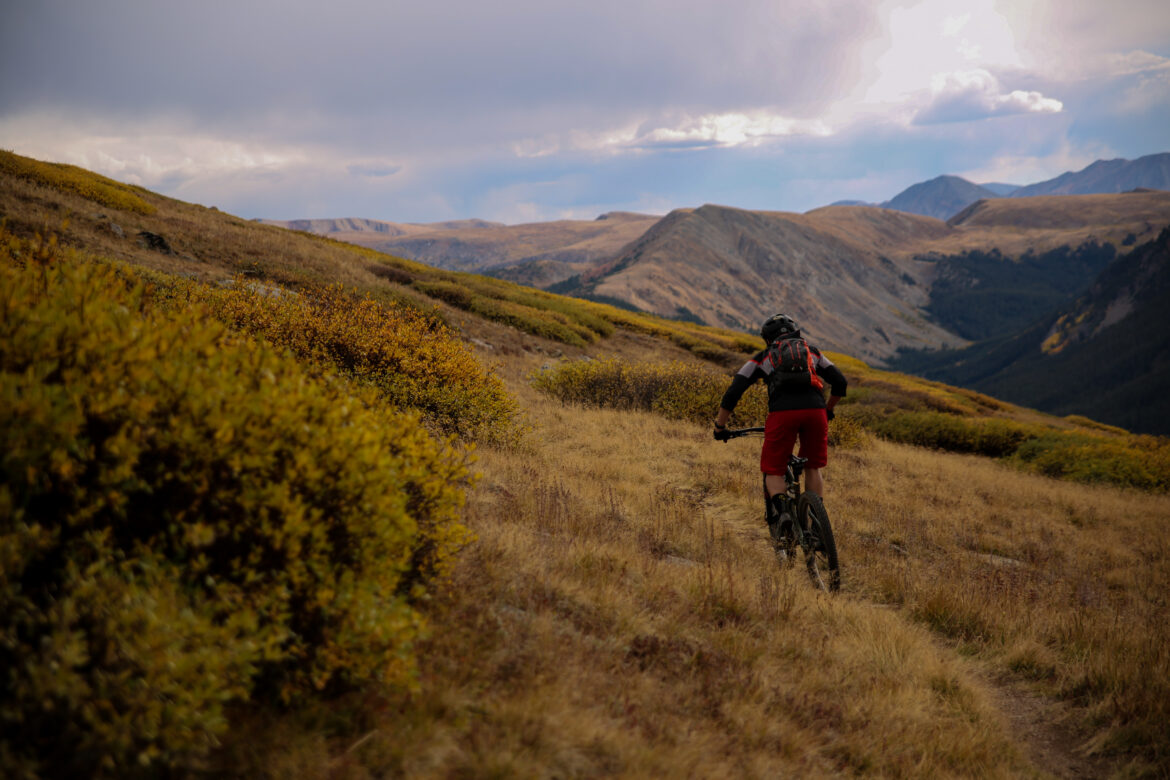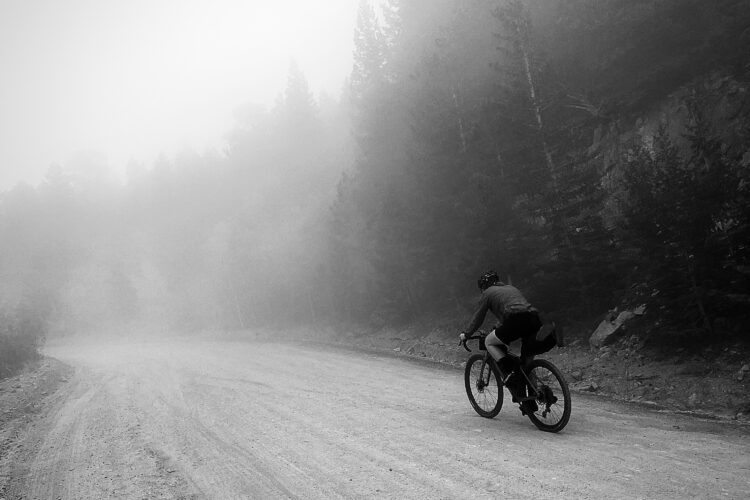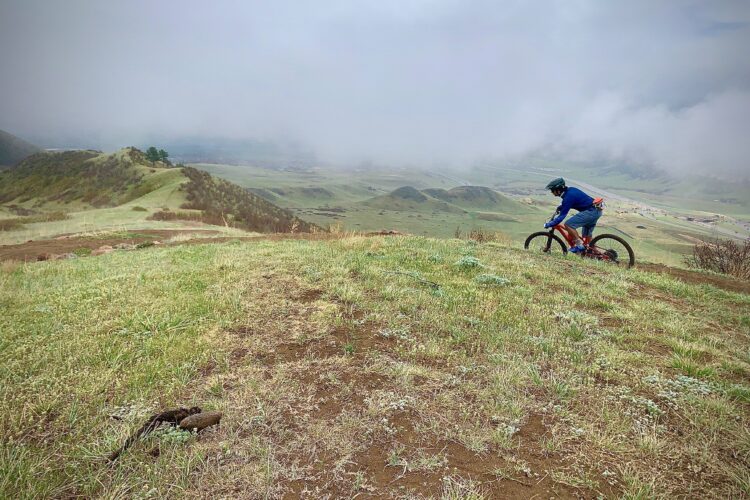
This summer on a late August day with skies as blue as the alpine lake below it, my friend and I laid our bikes down, barely off the side of the trail, and gazed over the mountainous bowl.
We spent about an hour sitting on the top of this adjacent mountain a little above 12,000ft, chewing gummy worms and energy bars and pondering the generations of erosion and the swelling and contraction of glaciers that created one of the most beautiful areas in Colorado I know of.
And for one hour, while I kept telling myself I should pull my bike farther off the trail, we had the view entirely to ourselves–on a clear Saturday in peak mountain bike season, 90 minutes from the millions of people who reside in Denver.
“It doesn’t get better than this,” I said. “I can’t believe no one else is up here.”
But then again, it was rather believable. We started in town at about 9,500ft and pedaled, pushed, and grunted uphill for two straight hours before we reached the break. The thing about starting a climb just below the alpine is that it continues to get harder. With every crank of the pedals the oxygen gets thinner as you fatigue more.
We started the ride with a long and uneventful grind up an unforgiving service road, void of exciting features to keep us engaged, but steep and full of enough loose rocks to make it maddening.
These happen to be my favorite types of rides because you have to surrender to the inevitable suffering of a long slog in the saddle. It’s liberating in the sense that all you have to focus on is getting to the top, whenever that may be, but it’s not for everyone and that’s fine. I don’t blame them.
It’s not that I particularly enjoy feeling like my burrito is going to pop back out of my throat at any moment, but the views are doubly rewarding because you realize that mountain biking is already an extremely hard activity. Not many people do it to begin with and even fewer want to ride the absolute hardest trails around, pretty as they may be.
Over the past few years there has been a big push by the industry and from advocacy groups to lower the barriers to become a mountain biker. And I support making the sport more accessible. Mountain bikes are expensive and many mountain bike trails are inaccessible or hard to access for some.

There is a clear reason why I spent just a few hundred bucks on a BMX bike as a pre-teen after working a paper route for a summer to save money for it instead of a mountain bike. My family was too busy working to take me to a trailhead, BMX was all over TV because of the X-Games, and I could pedal to street spots around my neighborhood.
But after spending a lot of time in the outdoors I realized that the harder you make something, the fewer people you’ll see out there. One of the best ways I can illustrate this is looking at the differences between skiing, snowboarding, and mountain biking. Skiing and snowboarding, though very expensive depending on what part of the country you live in, can be relatively more affordable compared to mountain biking.
You can easily get a beginner-level snowboard setup for under $500–or under $100, if you’re not afraid to offer someone on Craigslist a little less than what they’re asking for an old board and bindings. And you can still get winter passes to smaller mountains for under $500. Then you really just need to consider the time and gas money it takes to hit the mountain. But, if the conditions are good enough, everyone seems to have the time and money.
Compared to mountain biking, the barriers to entry are pretty low, and if you’re like me, you’ll quickly question if the sport you love is actually worth it after spending an extra hour in traffic, struggling to find parking at a resort, and then waiting a half-hour in the lift line. Yay, nature! Ascending snow-covered mountains in the winter is far more difficult and dangerous than ascending them by bike in the summer, and that’s why all but a small and very dedicated percentage turn to alpine touring; most will happily wait in line for the ski chair.
But those who do pick the hard route, just like those who mountain bike up and down the most technical and lung-punching trails or traverse a point-to-point route on their loaded down adventure bikes with a few friends, will experience a kind of reward and gratification that is different from being shuttled to the top of a run or even a one hour lunch ride.
I don’t know one advanced rider–one cardio nut, downhill trail tamer, or backcountry biker–who hasn’t put the time in year after year to reach the level they’re at now. Practice makes perfect. Not practicing and biting more than you can chew equals punishment.
Not all rides should be a grueling debacle with three hours in the saddle and an hour navigating singletrack enveloped by rocks and bushes that only see a handful of humans every year. But I’m happy they exist and I’m already looking forward to finding those remote views again next summer.



















